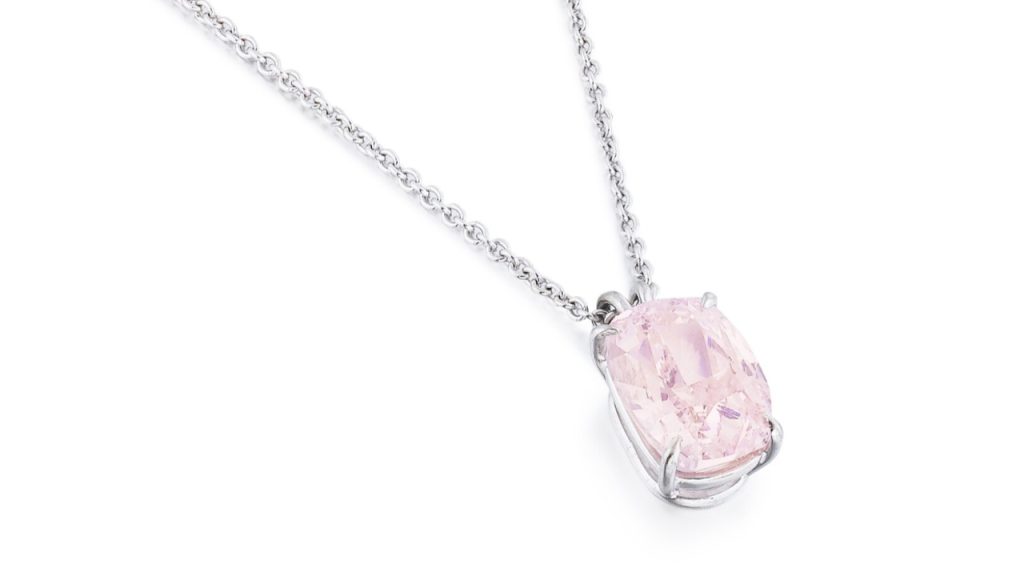
The top lot is a Graff pendant necklace expected to fetch at least $300,000.
Square-cut or pear-shaped, colorless or fancy-colored, loose or mounted, the rocks on the block at Jewels Online: Summer Sparkle — Christie’s first-ever online sale dedicated to diamonds — are sure to delight new buyers and seasoned collectors alike.
With 50 lots ranging from a triangular diamond eternity band (lot 36) with a low estimate of $2,000 to the top lot, a 20.21-ct. pear-shaped yellow-brown diamond mounted in a Graff necklace (lot 41) and estimated at $300,000–$400,000, the selection covers all taste, style and price preferences.

Lovers of uniquely colored diamonds are in for a treat, as the sale is rich in rare gems in rainbow hues, including pinks, oranges and greens—not to mention grays, browns and yellows. There is a showstopper of a ring centered on a square modified fancy grayish yellowish-green diamond framed by pink and white diamonds and set in platinum and rose gold (lot 37, estimated at $20,000–$30,000); a ring topped by a 7.6-ct. fancy deep brown-yellow diamond mounted, rather cheekily, on the horizontal (lot 20, $12,000–$18,000); and a sculpted Sabbadini flower brooch studded with colored and colorless diamonds (lot 24, $6,000–$8,000)

Rings, such as a 5.03-ct. pear brilliant-cut diamond set horizontally on a highly polished band of 18-karat blackened gold (lot 1, $60,000–$80,000), dominate the mostly contemporary selection, but there are plenty of earrings, too — including multiple styles by Graff as well as the British jeweler David Morris.

Clients with a passion for high design likewise will not be disappointed. Consider the pear-shaped pendant necklace designed by Elsa Peretti for Tiffany & Co. and suspended on a chic gold link chain (lot 47, $5,000–$7,000), or the sale’s lone bracelet, an 18k yellow gold bangle style by David Morris set with pavé yellow diamonds and marquise diamond accents (lot 33, $15,000–$20,000).
Source: DCLA










